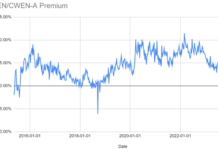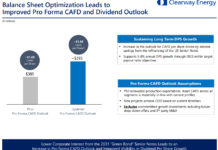Tom Konrad CFA
Renewable Energy Investing Grows Up.
In January I predicted 2014 would be the year “renewable energy finance comes of age.” Here’s how Jennifer Runyon quoted me on Renewable Energy World:
Konrad believes that 2014 will be a great year for renewable energy finance, he said. He said that we saw the beginning of it in 2013 with the securitization of a bond by Solar City (SCTY) and pointed to Hannon Armstrong’s (HASI) securitization of an energy efficiency bond in late December 2013 as another indicator that renewable energy financing is on track to take off in 2014.
“I think that we will see a few publicly traded ‘yield cos’ (yield companies) in solar listed in 2014,” he said. A yield co is a publicly traded company that is oriented towards income as opposed to growth. This type of investment opportunity is a major switch, said Konrad. “Any stock you have ever written about pretty much has been a growth stock,” he explained. “Tesla (TSLA) is a growth stock. People buy Tesla because they think they are going to keep on gaining market share,” he clarified.
“Now there are some new income stocks that came public last year: Hannon Armstrong, Pattern Energy Holdings (PEGI), NRG Yield (NYLD) and Brookfield Renewable Energy (BEP), so there are four, I would say, renewable energy income stocks on U.S. exchanges.”
…Once renewable energy assets are operating efficiently, they generate payback for their investors. Now that the technology has matured enough to gain the trust of some of the more reticent, risk-averse investors like corporations and banks, expect to see lower cost of capital for projects and greater interest in renewable energy stocks, bonds and mutual funds.
Renewable Energy Investing’s Awkward Teens.
It now looks like just “a few” yield cos may be an underestimate. Last month, Abengoa (ABGB) and NextEra (NEE) launched yield co spin-offs Abengoa Yield (ABY) and NextEra Energy Partners (NEP), respectively. Both IPOs were oversubscribed and priced at the top end of their expected range. Along with NRG Yield (a spinoff of alternative energy assets from NRG Energy (NRG) from last year) and Pattern Energy Group (PEGI), launched by privately held Pattern Development, these are all up substantially (38% for ABY to 131% for NYLD) from their offering price. In fact, they are up so substantially that their yields have fallen so far as to lend the very term “yield co” a hint of irony.
The only real US-listed exceptions are Hannon Armstrong Sustainable Infrastructure (HASI) and Brookfield Renewable Energy Partners (BEP,) which still offer yields of 6.6% and 5.5%, respectively. I suspect their relatively high yields arise from two factors, a rational one having to do with tax treatment and an irrational one having to do only with investor perception (or lack thereof.)
With regards to tax, BEP is organized as a partnership and HASI is organized as a REIT, meaning that distributions from HASI are taxed as income, not at the lower rate for qualified dividends, and some investors may not want to bother with the added complication of receiving an annual K-1 from BEP. Certain institutional investors such as many index funds also avoid there less usual corporate structures.
While differential tax treatment of dividends can have a significant impact on high income investors, possible investor aversion to the partnership structure has not put investors off NextEra Energy Partners’ stock because that company will be taxed as a corporation. At most, these factors might justify a 20% to 40% discount for HASI, and a 10% to 25% discount for BEP. Yet even after such discounts, they both trade at about two-thirds of the prices which would put them on par with the typical US-listed yield co.
I think the part of the discounts on BEP and HASI which is not accounted for by their tax structures can be ascribed to the immaturity of yield co investing. To extend my coming of age metaphor, renewable energy income investors are acting like teenagers: they’re a little new to the dating scene, and are more concerned about getting a date for the prom (yield co investment) than they are about the long term viability of the relationship.
Finding An Adult Relationship
I’ve been managing money professionally as long as many teenagers have been alive, and at this point I’m more interested in a stock’s long term potential for total return than dating stock market prom queens. This article is the first in a series which will compare the fifteen publicly traded stocks in the US, UK, and Canada which meet my definition of yield co: a company which owns primarily clean energy assets for the purpose of generating income which is mostly returned to investors in the form of distribution.
For a taste, the following chart shows the types of assets and the portion of the market capitalization not currently owned by the company’s sponsor (“market float.”) The numbers for Terraform Power (TERP) are based on the assumption that, like ABY and NEP, the offering will price at the top end of its range ($21) and that the underwriters exercise their full over allotment option.
UPDATE: The next two installments are here and here.
Disclosure: Long HASI, BEP, PEGI, RNW, CSE, INE, PRI, TRIG. Short NYLD Calls.
DISCLAIMER: Past performance is not a guarantee or a reliable indicator of future results. This article contains the current opinions of the author and such opinions are subject to change without notice. This article has been distributed for informational purposes only. Forecasts, estimates, and certain information contained herein should not be considered as investment advice or a recommendation of any particular security, strategy or investment product. Information contained herein has been obtained from sources believed to be reliable, but not guaranteed.









